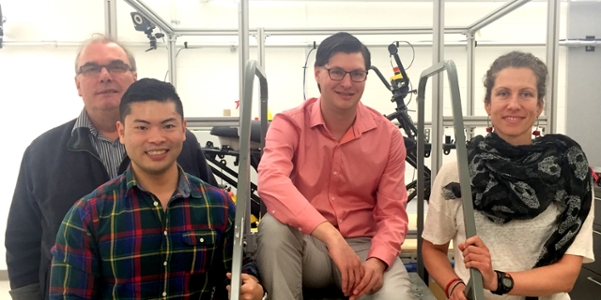
CCHSA's ergonomics lab officially open
New lab designed to broaden occupational health and safety research for Saskatchewan farmers
By Marg SheridanIt’s been a long time coming for the Canadian Centre for Health and Safety in Agriculture (CCHSA), but their ergonomics lab is now officially open.
And the timing couldn’t be more perfect as the centre is celebrating 30 years of agricultural medicine research this year.
“The ergonomics lab is important,” said Dr. Catherine Trask, the Canada Research Chair in Ergonomics and Musculoskeletal Health and an associate professor at the CCHSA. “I think it represents growth into a new area not only for the university, but also for the CCSHA.”

“A large fraction of occupational injuries are these musculoskeletal disorders that happen cumulatively, or chronic development, and they often manifest in a chronic or recurrent way,” Trask continued. “And that represents a lot of the WCB claims in Saskatchewan, and farmers in particular have a very high lifetime prevalence of musculoskeletal disorders, and we think that this is related to some of the exposures that they encounter during their work.”
The new ergonomics lab gives Trask and the CCHSA team both the space and the tools to research these chronic injuries, and recreate some of the conditions that may be causing them.
Some of the current research being done in the lab includes research into the impact of whole-body vibrations - often caused by tractors, combines or ATV’s – and looking into the effects of demanding, highly-repetitive work involving a lot of awkward positions and muscle activity in a sustained and forceful way, like feeding and handling animals.
“There’s some really heavy work associated with agriculture in general, and certainly farming in Saskatchewan in particular,” Trask continued. “And these are some of the risk factors that we’re able to measure now with the ergonomics lab (and the) equipment we can use inside the lab in an experimental way.”
Which means if the researchers have an idea that something is a risk factor – like the vibration of the force associated with lifting heavy objects – they can test some possible interventions.
“We can compare different types of solutions,” Trask explained. “Compare the types of exposure like muscle force, or measure the position or posture of the body in a highly accurate way - and then we can see what the differences are between different tools, different work environments, and different types of interventions.”
The new lab, which was sponsored through a Canada Foundation for Innovation (CFI) grant, is located in the Health Sciences E-Wing, and more information on the projects currently being undertaken in the lab can be found on the ergonomics lab website.
